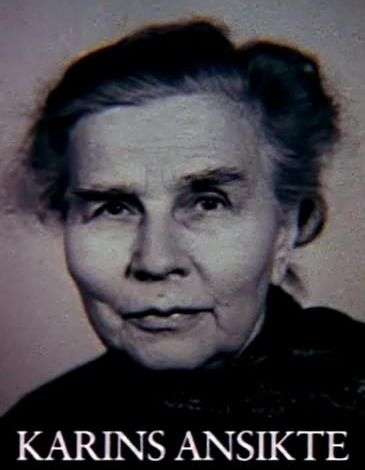Quote:
Conceived as an amusing diversion in the wake of Ingmar Bergman’s despairing trilogy, this comedy is the director’s first film in color, and it is an opulent visual feast. Working from a bawdy screenplay he cowrote with actor Erland Josephson, about a supercilious critic drawn into the dizzying orbit of a famous cellist, Bergman brings together buoyant comic turns by a number of his frequent collaborators, including Jarl Kulle, Eva Dahlbeck, Harriet Andersson, and Bibi Andersson. All These Women, in which Bergman pokes fun at the pretensions of drawing-room art, possesses a distinctly playful atmosphere and carefree cadences.Read More »
Ingmar Bergman
-
Ingmar Bergman – För att inte tala om alla dessa kvinnor aka All These Women (1964)
Arthouse1961-1970ComedyIngmar BergmanSweden -
Ingmar Bergman – Musik i mörker AKA Music in Darkness (1948)
1941-1950DramaIngmar BergmanSwedenBlinded during a wartime training accident, aspiring-musician Bengt Vyldeke (Birger Malmstein) refuses all efforts by well-meaning outsiders to help him. Ingrid (Mai Zetterling) is hired as his companion and ‘eyes’.Read More »
-
Ingmar Bergman – Viskningar och rop AKA Cries and Whispers [+Extras] (1972)
1971-1980ArthouseDramaIngmar BergmanSwedenQuote:
In his book Images, Ingmar Bergman has written: “All my films can be thought of in terms of black and white, except for Cries and Whispers. In the screenplay it says that red represents the interior of the soul. When I was a child, I imagined the soul to be a dragon, a shadow floating in the air like blue smoke – a huge winged creature, half bird, half fish. But inside the dragon, everything was red.”Certainly, Cries and Whispers marks the most sophisticated use of color in Bergman’s long career. It was only in 1963 that he turned, somewhat reluctantly, to color for All These Women, and even after that he continued to opt for black and white in such critical films as Persona, Hour of the Wolf, and Shame. With Cries and Whispers, however, Bergman for once – by his own admission – wants the work to be regarded in chromatic terms.Read More »
-
Ingmar Bergman – Törst AKA Thirst (1949)
1941-1950DramaIngmar BergmanSwedenQuote:
With Thirst (1949), Ingmar Bergman began to display an astonishing technical virtuosity and control over the medium of film. A crosshatched, multilayered narrative, sewn together with fascinating side trips and flashbacks, Thirst was adapted by theater critic (and Bergman mentor) Herbert Grevenius from four controversial short stories written by famed Swedish stage actress Birgit Tengroth, and moved Bergman even further away from his theatrical origins. Simultaneously a portrait of a decaying marriage and a dreamlike journey through various characters’ tragic pasts and presents, the film evinces a newfound assurance, both in storytelling complexity and visual invention. Notoriously hard on his own work, Bergman himself was even able to later grant, “The film does show a respectable cinematographic vitality. I was developing my own way of making movies.”Read More » -
Ingmar Bergman – Persona [+Extras] (1966)
1961-1970ArthouseDramaIngmar BergmanQueer Cinema(s)SwedenQuote:
Persona is arguably Ingmar Bergman’s most challenging and experimental film. Elisabeth Vogler (Liv Ullman) is an accomplished stage actress who, in the middle of performing Elektra, ceases to speak. Sister Alma (Bibi Andersson), the young nurse assigned to care for her, learns that there is nothing physically or even psychologically wrong with Elisabeth – she has simply, consciously decided not to speak. Alma (the name, not accidentally, is the Spanish word for soul) describes her initial impressions of Elisabeth as gentle and childlike, but with strict eyes. She takes Elisabeth to the attending physician’s remote summer house to facilitate her recuperation. At first, the two seem ideally suited: a talkative, candid, and inexperienced nurse, and a sophisticated, enigmatic, and silent patient. They take long walks, bask in the sun, and read together. It is obvious that their isolation has cultivated a sense of intimacy between them, albeit one-sided.Read More » -
Stefan Brann – Ingmar Bergman Reflections On Life Death And Love (1999)
1991-2000DocumentaryIngmar BergmanStefan BrannSwedenTVQuote:
Legendary director Ingmar Bergman rarely gives interviews, but in 1999 he made an exception for journalist Malou von Sivers of TV4 International Sweden. Together with his best friend and frequent collaborator, the renowned Swedish actor Erland Josephson, Bergman discusses life, death, and love in this charged and highly candid interview.Read More » -
Ingmar Bergman – Karins ansikte aka Karin’s Face (1986)
1981-1990DocumentaryIngmar BergmanShort FilmSwedenThis short was made for Swedish television and was actually aired in 1986, unlike imdb claims.
Quote:
“This is a surprising and lovely film, and thoroughly engrossing, given its brief length. Shot and framed with exquisite care, it validates a favorite past time and the value of looking at old photographs of family members to gain insight into one’s self.Amassing as many of the old photos as he could of his parents and grandparents, their relatives and offspring, Bergman takes long, lingering views of their faces, their hands, the expressions in their eyes and mouths, registering for us all, something special in the faces of siblings and relatives young and old. These are long loving looks, with no narration, just a piano playing a simple slightly abstract tune. It was quite moving to see, just through juxtaposition, what Bergman could lead us to think about how he regards his mother, father, aunts, uncles, cousins, — anyone who was pictured, including himself as a boy.Read More »







